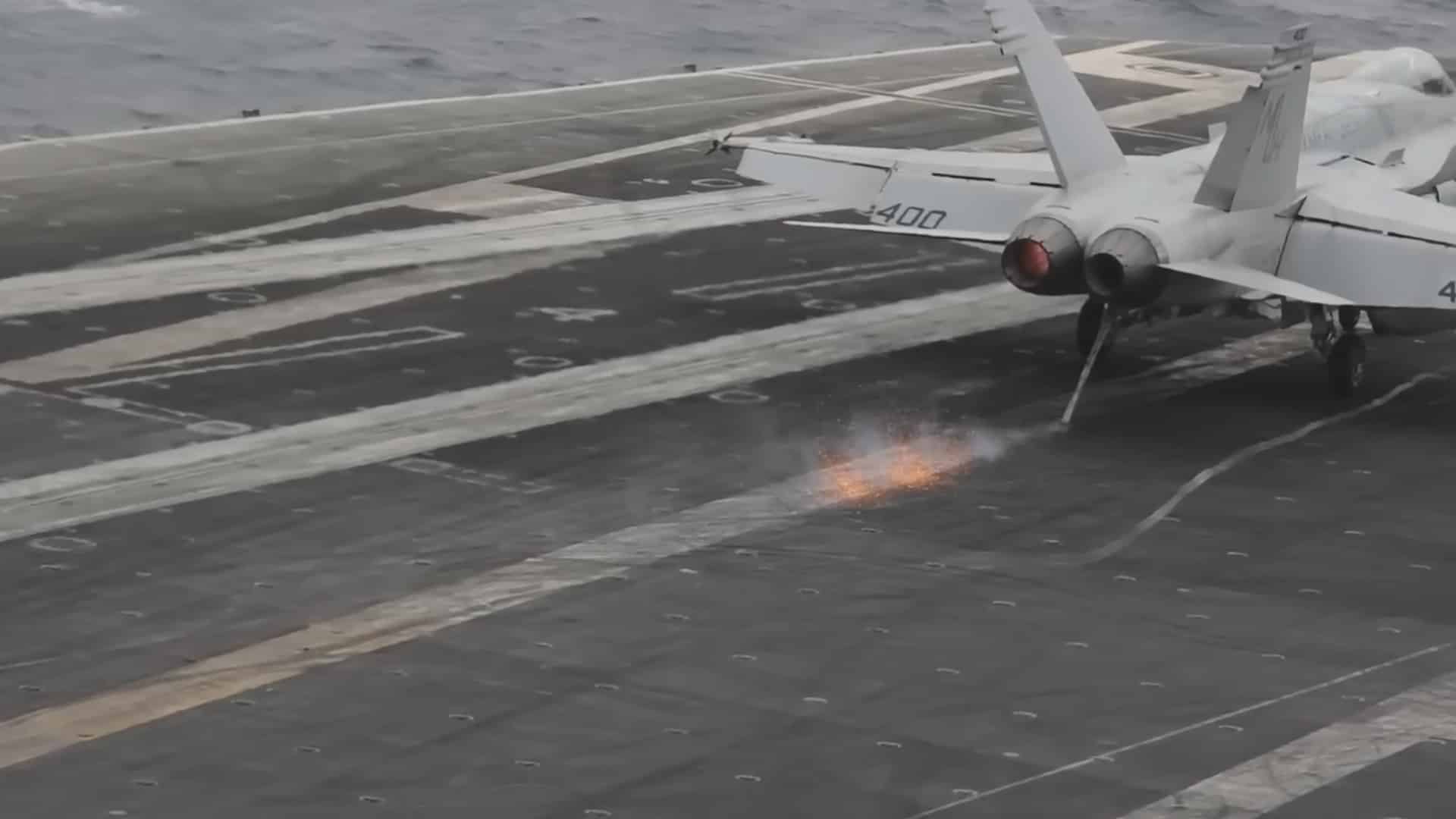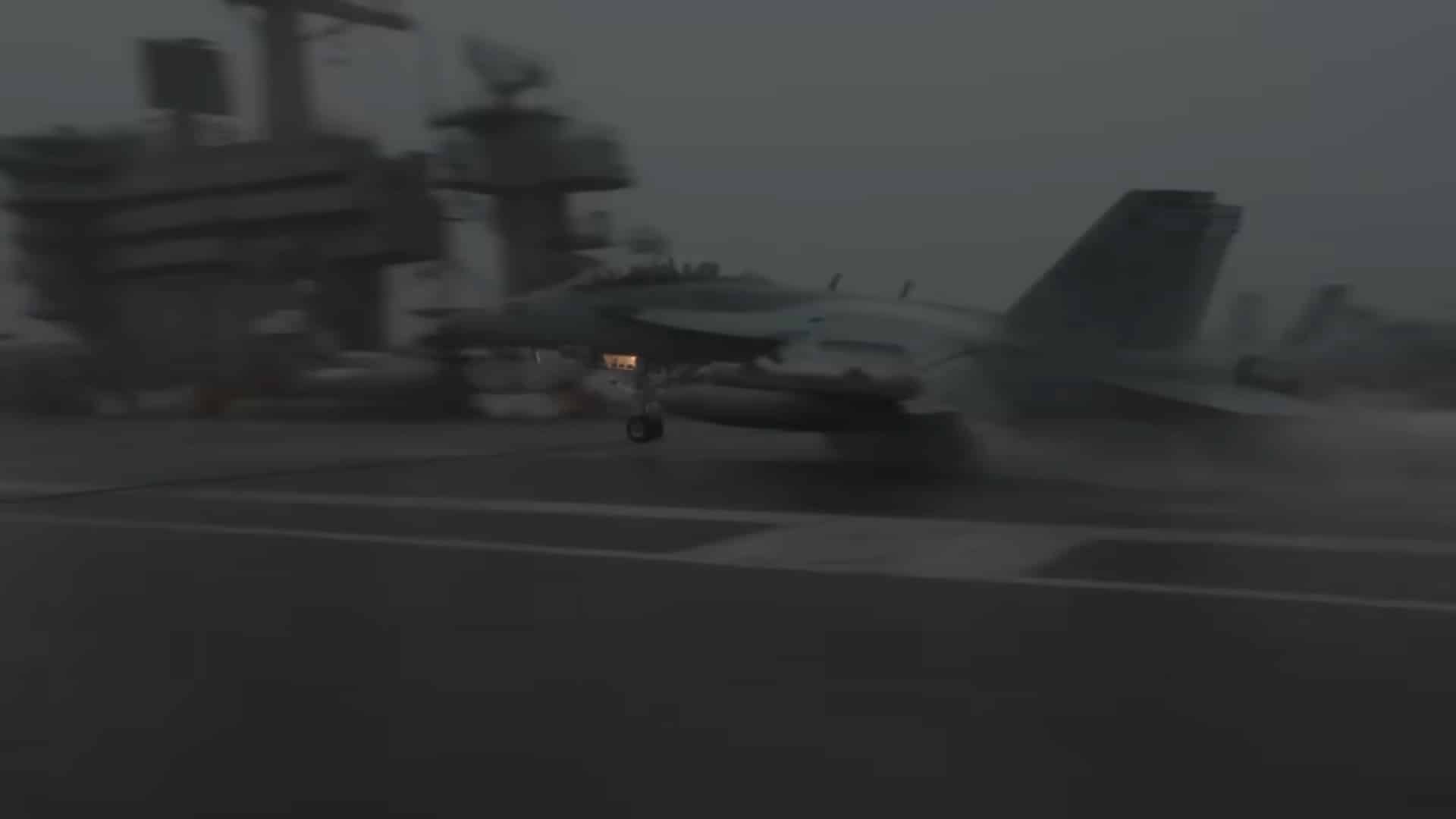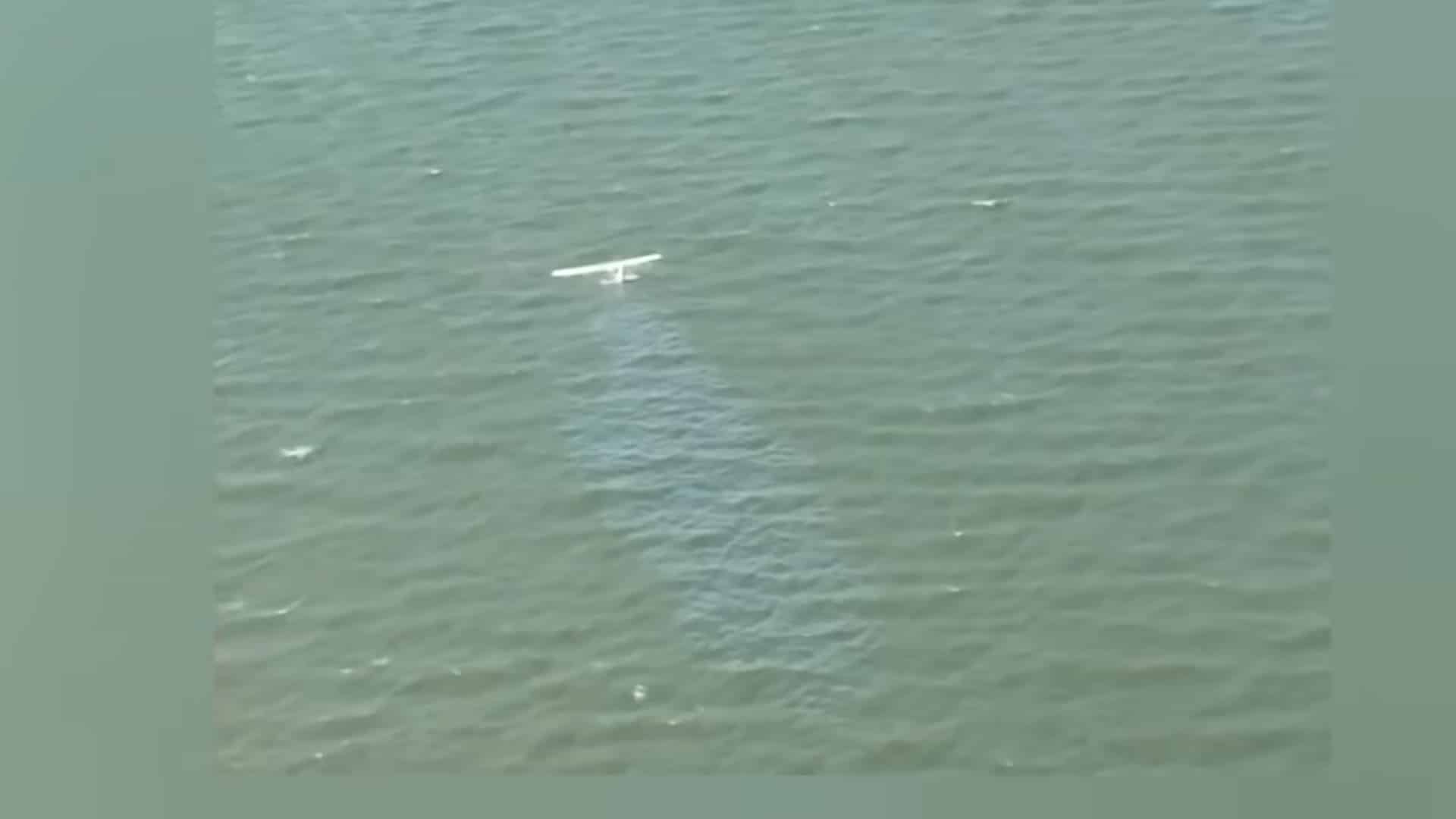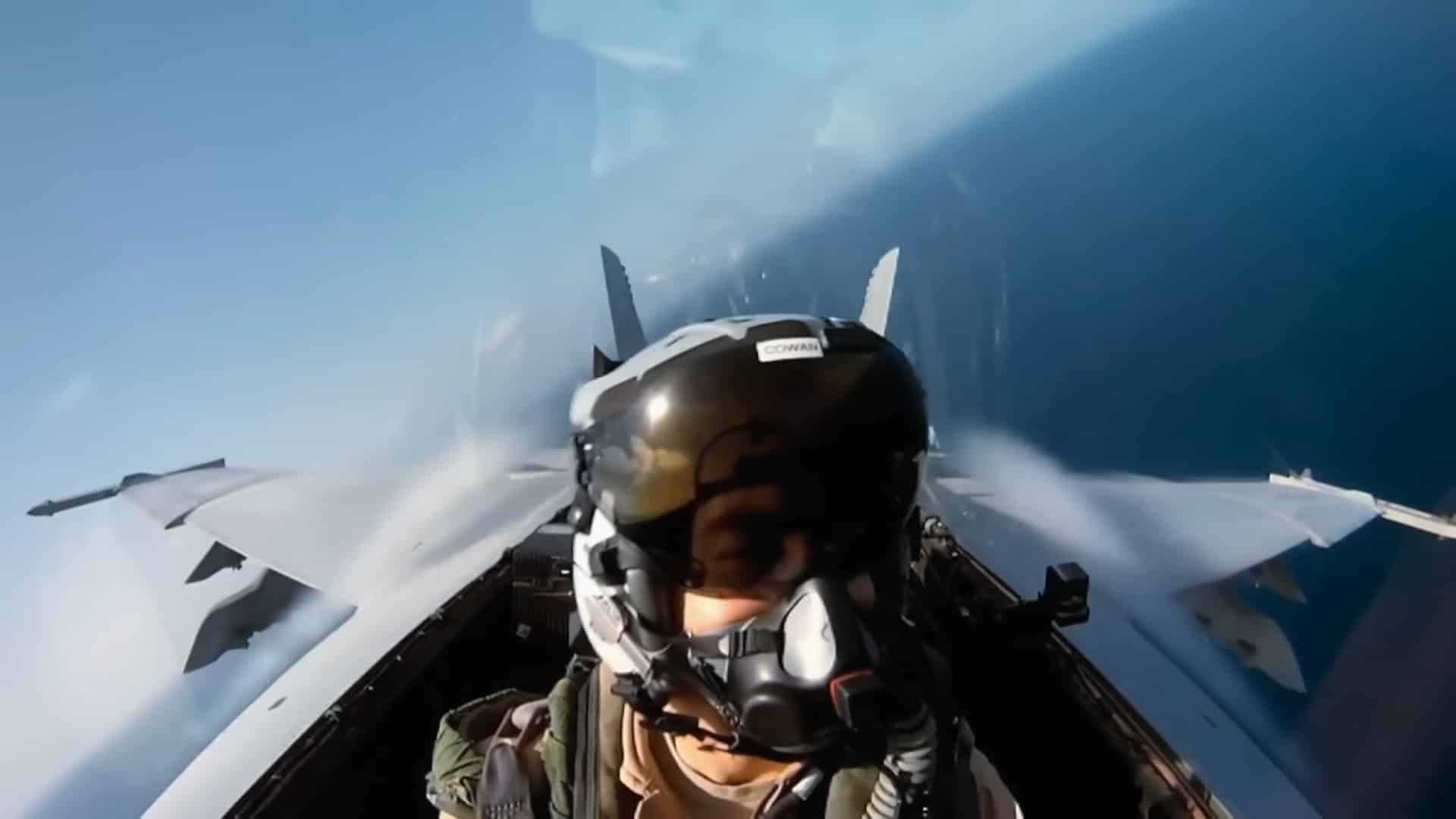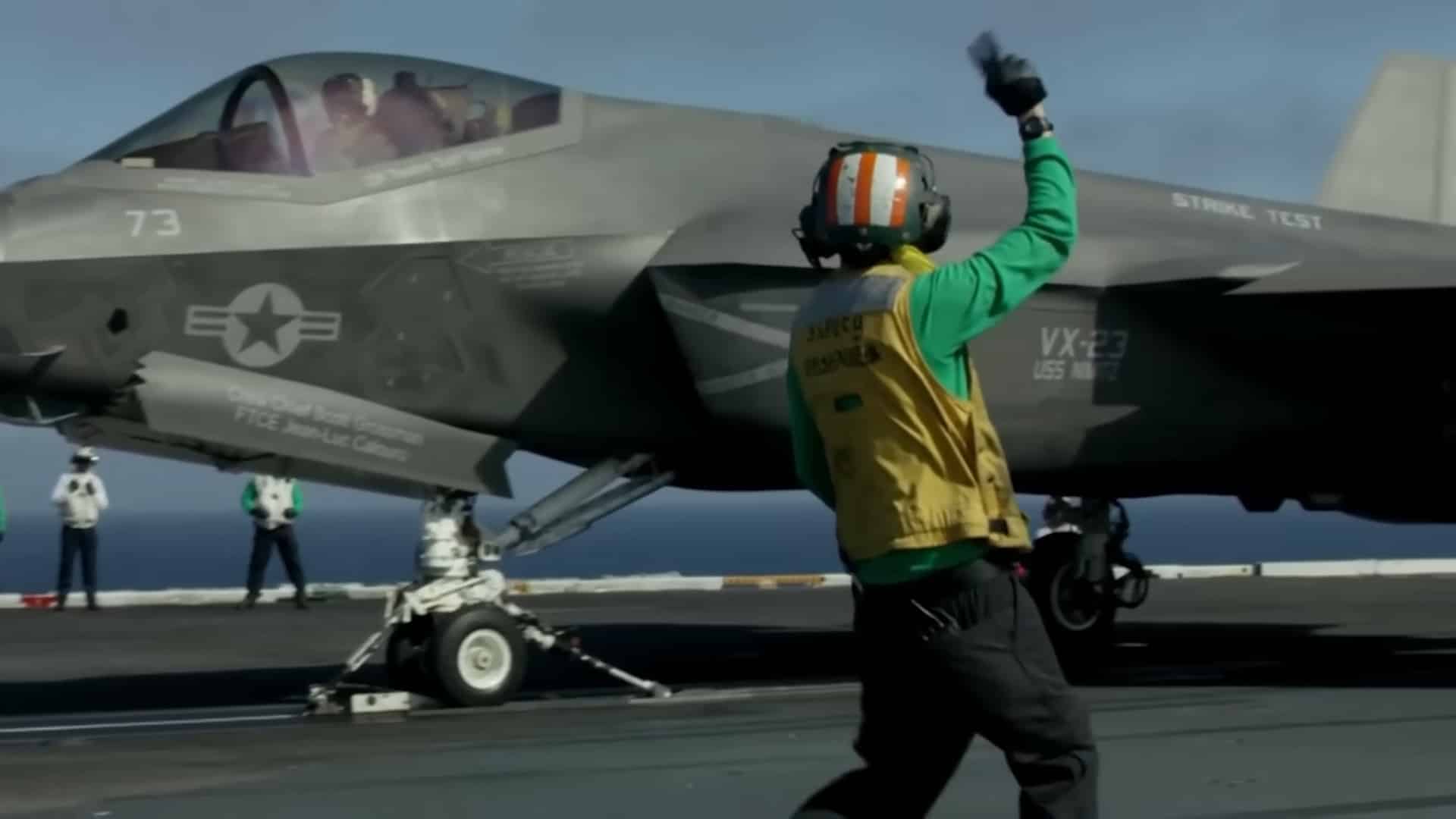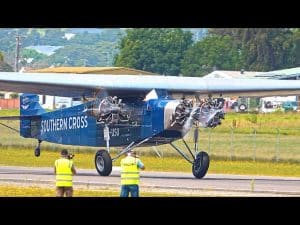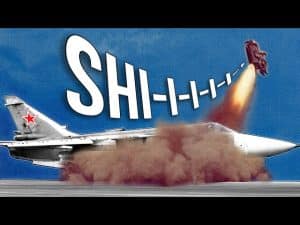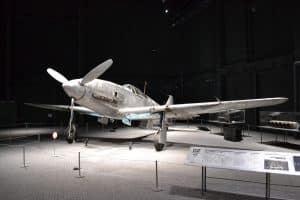What Happens When Pilots Miss The Arrestor Cables
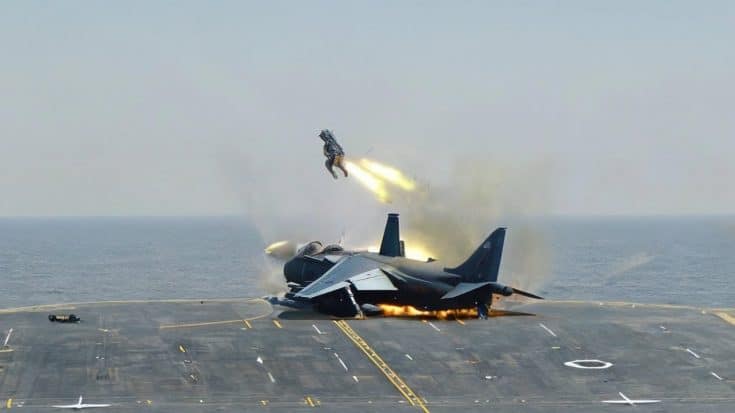
YouTube / NAVY Productions
What happens when the pilot misses this lifeline in an extremely complex operation?
Arrested Tail Hook Landings
This technique is applied daily on the compact deck of an aircraft carrier. When executing an arrested tail hook landing, a specific part of the plane plays a key role – the tail hook.
This hook – sturdy and robust, is located on the jet’s rear. During landing, the hook is lowered to catch one of the arresting cables that are stretched on the ship’s deck.
The arresting cable is connected to a hydraulic brake system and is then pulled as soon as the tail hook gets a grip.
This brings the plane to a halt even at an incredibly short distance. It’s a perfect symphony of precision, timing, and technique.
Consequences
The consequences of a failed tail hook landing can be huge. A plane that fails to stop can literally go overboard and end up in the ocean.
It can also cause devastating damage on the deck itself – posing a significant threat to the crew and other aircraft on deck.
Because of high speeds and limited space available on the aircraft carrier, the margin of error is incredibly small.
Failed Landings
In a failed tail hook landing, a certain term is used – a Bolter. This happens when a plane misses or fails to grip the arresting cable.
When this happens, the pilot must immediately go full throttle while simultaneously steering the plane upward. If the pilot ends up in the water, a rescue operation is dispatched.
Hand gestures are also used. For instance, when a bolter happens, the crew makes a motion that somewhat resembles hitting an imaginary table – this is also a signal for the pilot to go full throttle and take off again.












